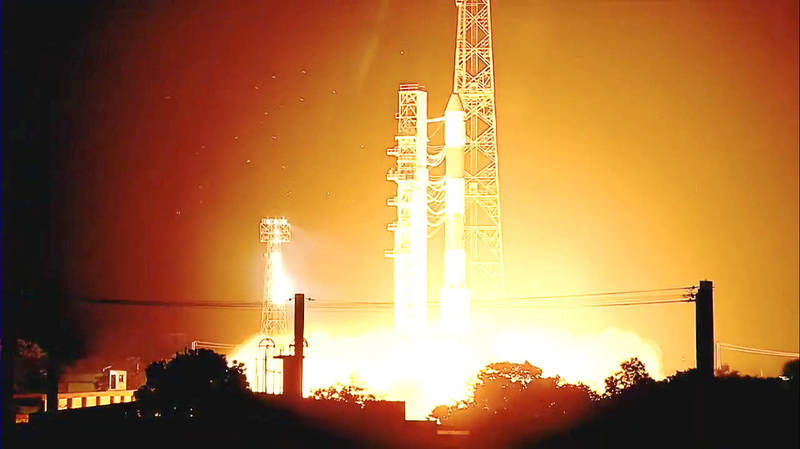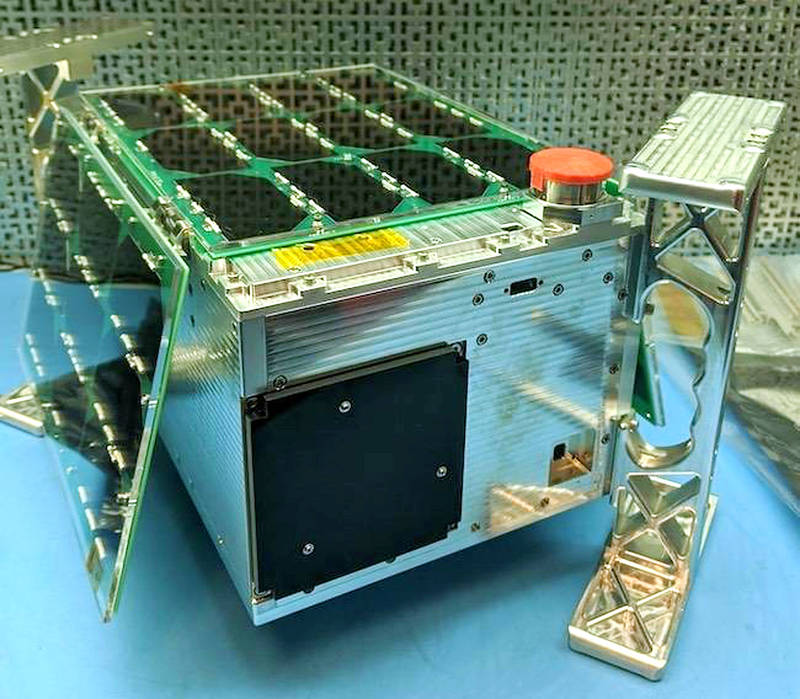《TAIPEI TIMES》 INSPIRESat-1 microsatellite enters orbit

The INSPIRESat-1 microsatellite is launched at 8:29am Taipei time yesterday from Satish Dhawan Space Centre in Sriharikota, India. Photo: screen grab from ISRO live-streaming
GLOBAL TEAMWORK: The successful launch of the microsatellite is the culmination of four years of collaborative research and development under the INSPIRE program
By Kayleigh Madjar / Staff writer, with CNA
A scientific microsatellite jointly developed by institutions in Taiwan, the US and India was launched yesterday morning, representing a major milestone in scientific collaboration and the nation’s achievements in space research.
The INSPIRESat-1 microsatellite was launched at 8:29am Taipei time from Satish Dhawan Space Centre in Sriharikota, India.
The US received a signal from the satellite when it passed overhead at 9:30am, while Taiwan is expected to detect a signal at about 5pm today.
It is to remain in sun-synchronous orbit at an altitude of 525km, where it is to collect data for participating institutions to use in scientific research.
The satellite has a mission life of one year and a primary minimum requirement of six months for science operations.
The successful launch is the culmination of four years of collaborative research and development under the International Satellite Program in Research and Education (INSPIRE), a consortium of universities with space science departments.
It also marks the first collaboration between a Taiwanese academic institution, National Central University (NCU) and the Indian Space Research Organization, which was responsible for launching the satellite on its Polar Satellite Launch Vehicle.
The Indian Institute of Space Science and Technology has primary flight control, with assistance by NCU and the University of Colorado, Boulder.
One of its two major payloads is a compact ionospheric probe developed by NCU for studying the Earth’s dynamic ionosphere.
The other is a dual-zone aperture X-ray solar spectrometer developed by the University of Colorado, Boulder, with funding from NASA for studying highly variable solar X-ray radiation, together forming a kind of space weather station.
In a news release, the Ministry of Science and Technology touted federal programs that supported NCU professor Loren Chang (張起維) as he pursued the collaboration.
The government encourages academics to participate in cross-national research as a way to contribute to global knowledge and enhance the influence of Taiwan’s scientific achievements, the ministry said.
Space technology is an important indicator of the nation’s strength in scientific research, it said.
Looking ahead to the future of the space industry, Taiwan has long invested in research and talent in the field, it said.
Last year also saw the passage of the Space Development Act (太空發展法), which combines the strengths of industry, government and academia to develop a blueprint for space development to rival cutting-edge international missions, it added.
新聞來源:TAIPEI TIMES

The INSPIRESat-1 microsatellite is pictured in an undated photograph. Photo courtesy of the University of Colorado LASP



















